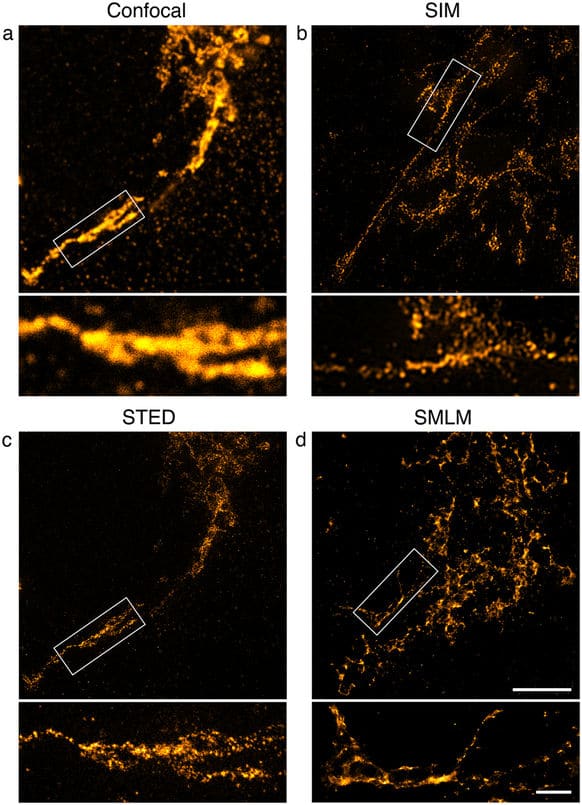News: Recent Improvements in Single-Molecule Localization Microscopy

New types of microscopy such as confocal, multi-photon and super-resolution, all fluorescence based, have been developed to address that need. Among them, a subset of super-resolution microscopy, called Single-Molecule Localization Microscopy (SMLM), currently offers the highest resolution achievable on the market (down to ~10 nm–20 nm). For their seminal discovery of the localization-based imaging techniques, three investigators, Eric Betzig, Stefan W. Hell and William E. Moerner, received the Nobel Prize in Chemistry in 2014.
Broadly, in fluorescence microscopy, a sample is first labeled by fluorescence-emitting moieties, so-called fluorophores. A light source then illuminates the probe, exciting all the fluorophores at the same time. A camera collects all outgoing fluorescent signals to construct the image. Regarding the diffraction limit, the main resolution-limiting problem of this approach is the overlap of the fluorescent dots on the camera.
SMLM solves this problem by breaking the excitation process into hundreds or thousands of smaller steps, and illuminating only a tiny fraction of the fluorophore population, which is ensured to be stochastically distributed and sparse by using photo-switchable fluorophores at each step. After recording images of all the steps, the final super-resolved image is constructed by overlaying the images. Depending on the type of the photo-switchable fluorophore used, the technique is called PALM (PhotoActivated Localization Microscopy), which uses fluorescent proteins; STORM (Stochastic Optical Reconstruction Microscopy), which uses a pair of synthetic dyes, and dSTORM (direct STORM).
The public sector is the largest application sector for these highly advanced microscopes, with the next largest segment being the pharmaceutical and biotechnology sector.
In 2016, the total market for SMLM microscopy amounted to approximately $65 million per year, and is forecasted to grow annually in low- to mid-teens over the next few years. The growth is mainly fueled by research groups seeking to gain access to the most sophisticated instruments available, or to enhance their current systems to have even greater capabilities, as well as the overall healthy growth of biomedical research in the biotech and pharmaceutical industries.
Single-Molecule Localization Microscopy at a Glance:
Leading Suppliers:
- Leica Microsystems (Danaher)
- Nikon
- ZEISS
Largest Markets:
- Academia
- Government
- Biotech
Instrument Cost:
- $1 million–$4 million
To read the full article, with additional details on the growth of this market and the vendors currently manufacturing SMLM systems, click here to receive a free trial subscription to the Instrument Business Outlook Newsletter.
If you are already a subscriber, click here to view the full article.




